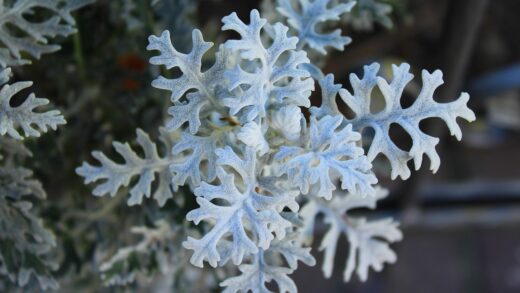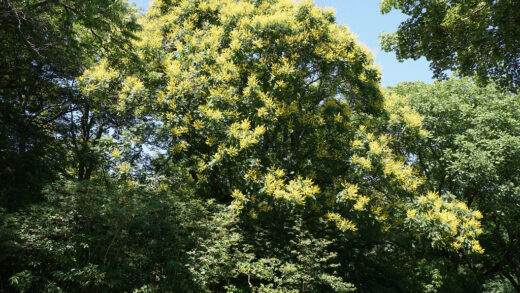Preparing your apple-scented mint for the winter is a crucial step in ensuring its survival and vigorous return the following spring. As a hardy perennial, this variety of mint is well-equipped to handle cold temperatures, but a little assistance from the gardener can make a significant difference, especially in colder climates or for plants grown in containers. The process of wintering is not merely about protection from the cold; it is about setting the stage for the plant’s dormancy, a natural period of rest that is essential for its long-term health and productivity. By taking a few simple steps in the autumn, you can safeguard your plant against the harshest elements of winter and ensure it has the energy reserves needed for a spectacular comeback when the weather warms again.
The first step in preparing your garden-grown apple-scented mint for winter begins in the mid to late autumn, often after the first light frost has touched the foliage. At this point, the plant has finished its active growth for the season and is beginning to channel its energy downward into its root system. This is the ideal time to give the plant a hard pruning. Using a clean pair of shears or scissors, cut all the stems and foliage back to just a few centimeters above the soil line. This may seem drastic, but it is incredibly beneficial for the plant.
This autumn pruning serves several important purposes. Firstly, it removes any old, tired, or potentially diseased foliage, preventing pathogens like mint rust from overwintering on the plant material and re-infecting the new growth in the spring. Secondly, it tidies up the garden bed, creating a clean slate for the following year. Most importantly, by removing the top growth, you are encouraging the plant to focus all its remaining energy and resources into its rhizomes and roots, which are the parts of the plant that will survive the winter and fuel the new growth next season.
After cutting the plant back, the next step is to provide a layer of protective mulch. Once the ground has had a chance to get cold, and perhaps even after the first hard freeze, apply a generous layer of organic mulch over the top of the mint patch. This layer, which can be 5-10 centimeters thick, can consist of materials like shredded leaves, straw, or wood chips. The purpose of this mulch is not to keep the ground warm, but rather to keep it consistently cold and frozen throughout the winter.
This insulation helps to protect the plant’s dormant roots from the damaging effects of repeated freezing and thawing cycles, which can heave the plant out of the ground and expose its roots to the cold, dry winter winds. The mulch acts as a stabilizing blanket, maintaining a more constant soil temperature and protecting the root system from this stress. Come spring, as the threat of hard frost passes, this mulch can be gently raked away to allow the new shoots to emerge into the sunlight.
More articles on this topic
Winter care for container-grown mint
Apple-scented mint grown in containers requires a different approach to winter care because the root system is far more exposed to the cold than it would be in the ground. The soil in a pot can freeze solid much more quickly and deeply than garden soil, as it is surrounded by cold air on all sides. This makes the roots of container-grown plants particularly vulnerable to winter damage. In regions with harsh winters, simply leaving a potted mint outdoors without protection is often a recipe for disaster.
One of the most effective methods for protecting a potted mint is to move it to a more sheltered location. An unheated garage, a cold frame, a shed, or a protected porch can provide enough of a buffer from the coldest temperatures and harsh winter winds to ensure the plant’s survival. The goal is not to keep the plant warm and growing, but rather to keep the roots from freezing solid and experiencing extreme temperature fluctuations. The plant should still be allowed to go dormant, so a warm, indoor location is not suitable.
If you do not have a suitable sheltered location, you can try to insulate the pot itself. One way to do this is to “plant” the entire pot in the ground in a vacant spot in your garden before the ground freezes. The surrounding soil will provide excellent insulation for the roots. Another method is to group several pots together in a sheltered spot, such as against the wall of the house, and then surround the cluster of pots with a thick layer of insulating material like fallen leaves, straw, or even bubble wrap.
Watering during the winter months for a dormant, container-grown plant should be done very sparingly. The plant is not actively growing and therefore has very minimal water needs. You only need to check the soil every few weeks and provide a small amount of water if it has become completely bone dry. The goal is simply to prevent the roots from desiccating. Overwatering a dormant plant in a cold environment is a very common mistake and will almost certainly lead to root rot.
More articles on this topic
Preparing the garden bed
The preparation of the garden bed in autumn is a key part of the wintering process for in-ground apple-scented mint. Before you apply the final layer of protective mulch, it is a good time to do some final weeding around the mint patch. Removing any perennial weeds in the autumn will mean there is less competition for your mint when it begins to grow again in the spring. This final cleanup helps to ensure that your mint will have the best possible start to the new season.
This is also an opportune moment to consider the plant’s boundaries. As we know, mint has a tendency to spread aggressively via its underground rhizomes. The end of the season is a good time to redefine the edges of your mint patch. You can use a sharp spade to cut a clean line around the area where you want the mint to be contained, severing any runners that have escaped their designated zone. This helps to keep the plant in check and prevents a major takeover battle the following spring.
After cutting the plant back, but before applying mulch, you can also consider a very light top-dressing of compost if your soil is in need of amendment. This is not for immediate feeding, as the plant is entering dormancy, but rather to allow the nutrients to be slowly incorporated into the soil over the winter months by the action of frost, worms, and microbes. When spring arrives, this will have created a fertile foundation for the new growth to draw upon.
Once the mint is cut back, the area is weeded, the edges are defined, and any amendments are added, you are ready for the final step of applying the winter mulch. As previously mentioned, wait until after the ground has cooled down significantly. Applying mulch too early, while the ground is still warm, can trap that warmth and potentially delay the plant’s dormancy. It can also create a cozy haven for rodents and other pests to nest in over the winter. Patience is key; let the cold weather signal when it is time to tuck your mint in for its long winter sleep.
Bringing mint indoors for the winter
For gardeners who want a supply of fresh apple-scented mint throughout the winter, bringing a portion of the plant indoors is an excellent option. This is best done before the first hard frost of the autumn. You can either pot up a division from an established in-ground plant or simply bring a pre-existing container-grown mint inside. If you are digging a division, choose a healthy section from the outer edge of the clump and pot it into a container with fresh, well-draining potting mix.
Once indoors, the mint will need to be placed in the sunniest location you can provide. A south-facing window is ideal, as the plant will need as much light as possible to continue producing healthy foliage. Insufficient light is one of the biggest challenges of growing herbs indoors over the winter. If you do not have a location with at least 6 hours of direct sunlight, you may need to supplement with a grow light to prevent the plant from becoming weak, pale, and leggy.
The indoor environment is typically much drier than the outdoors, especially when central heating is running. This means you will need to monitor the soil moisture of your potted mint carefully. Water it thoroughly whenever the top inch or two of the soil feels dry to the touch. It is also beneficial to increase the humidity around the plant. You can do this by placing the pot on a tray filled with pebbles and water (ensuring the bottom of the pot is not sitting in the water) or by misting the leaves every few days.
Growing indoors over winter can make the plant more susceptible to pests like spider mites and aphids, which thrive in warm, dry conditions. Inspect your plant regularly, paying close attention to the undersides of the leaves. If you spot any pests, you can often manage them by wiping them off or by using a gentle spray of insecticidal soap. With proper light, water, and care, your indoor apple-scented mint can provide you with a welcome taste of summer throughout the coldest months of the year.


















